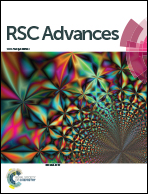Convenient and efficient synthesis of functionalized unsymmetrical alkynyl sulfides†
Abstract
We developed a simple and efficient method for the synthesis of functionalized unsymmetrical alkynyl sulfides under mild conditions in good yields. The designed method is based on the reaction of 5,5-dimethyl-2-thioxo-1,3,2-dioxaphosphorinan-2-disulfanyl derivatives with lithium acetylides. The developed method allows the preparation of unsymmetrical alkynyl sulfides bearing additional hydroxyl, carboxyl, or amino functionalities.


 Please wait while we load your content...
Please wait while we load your content...